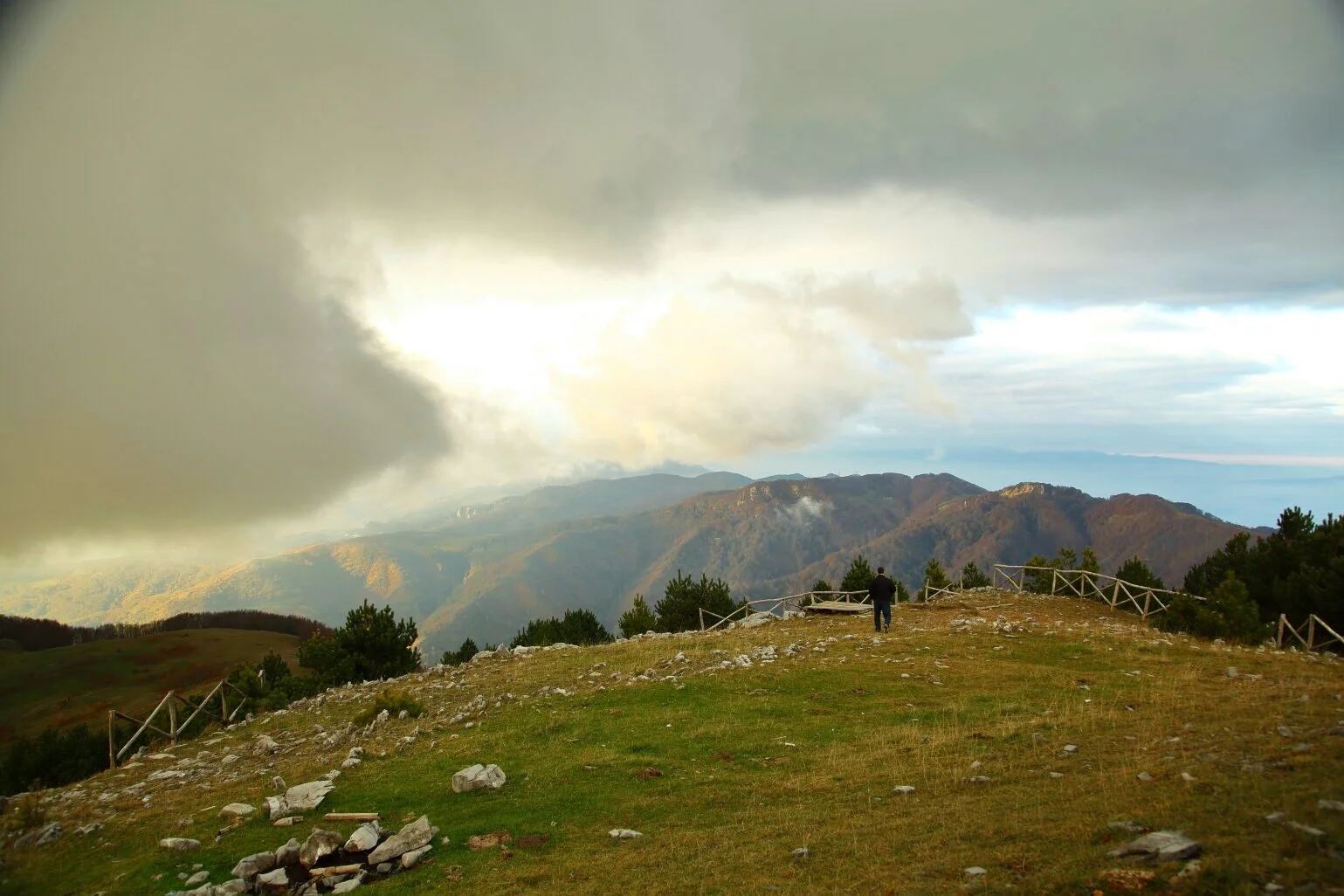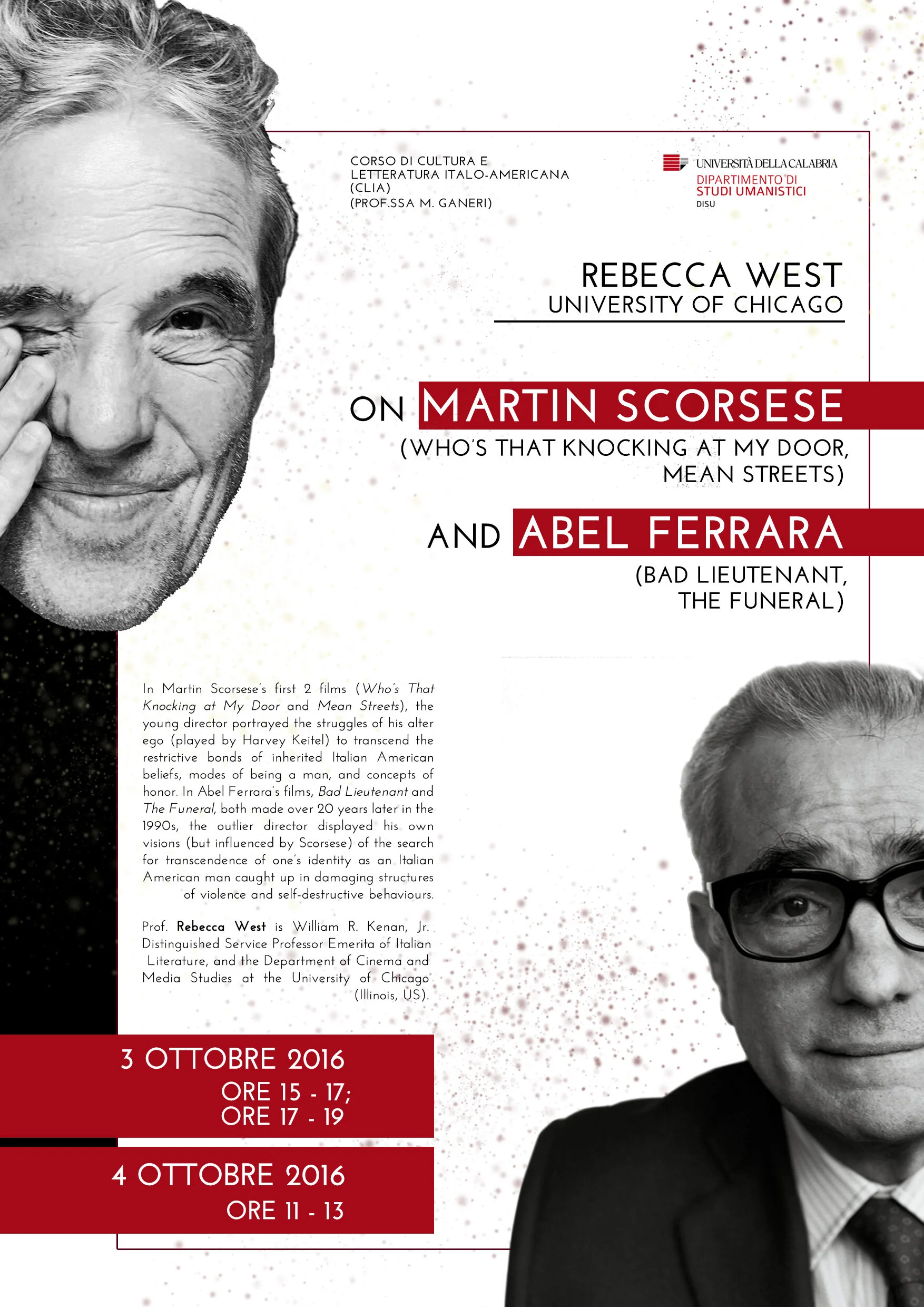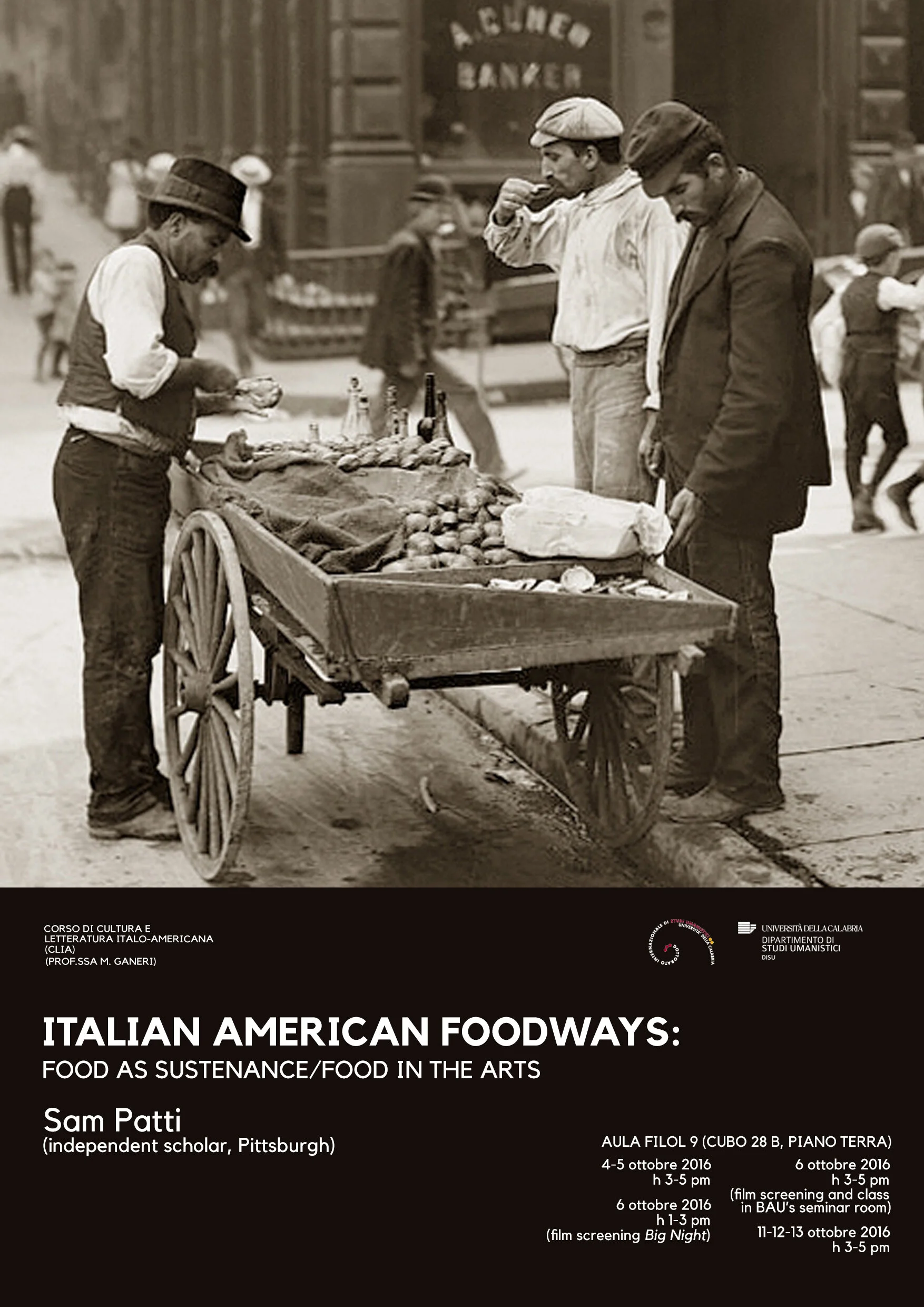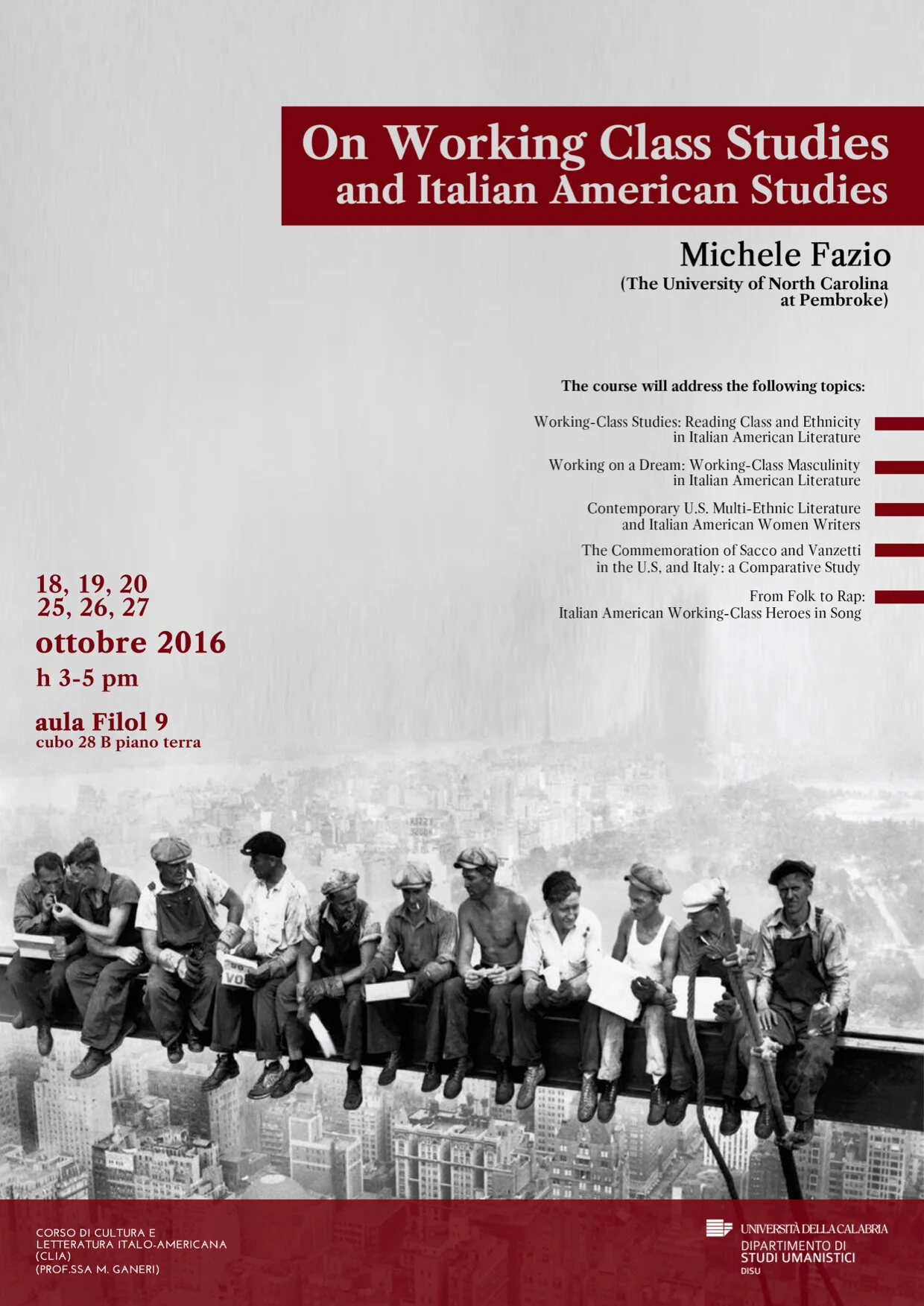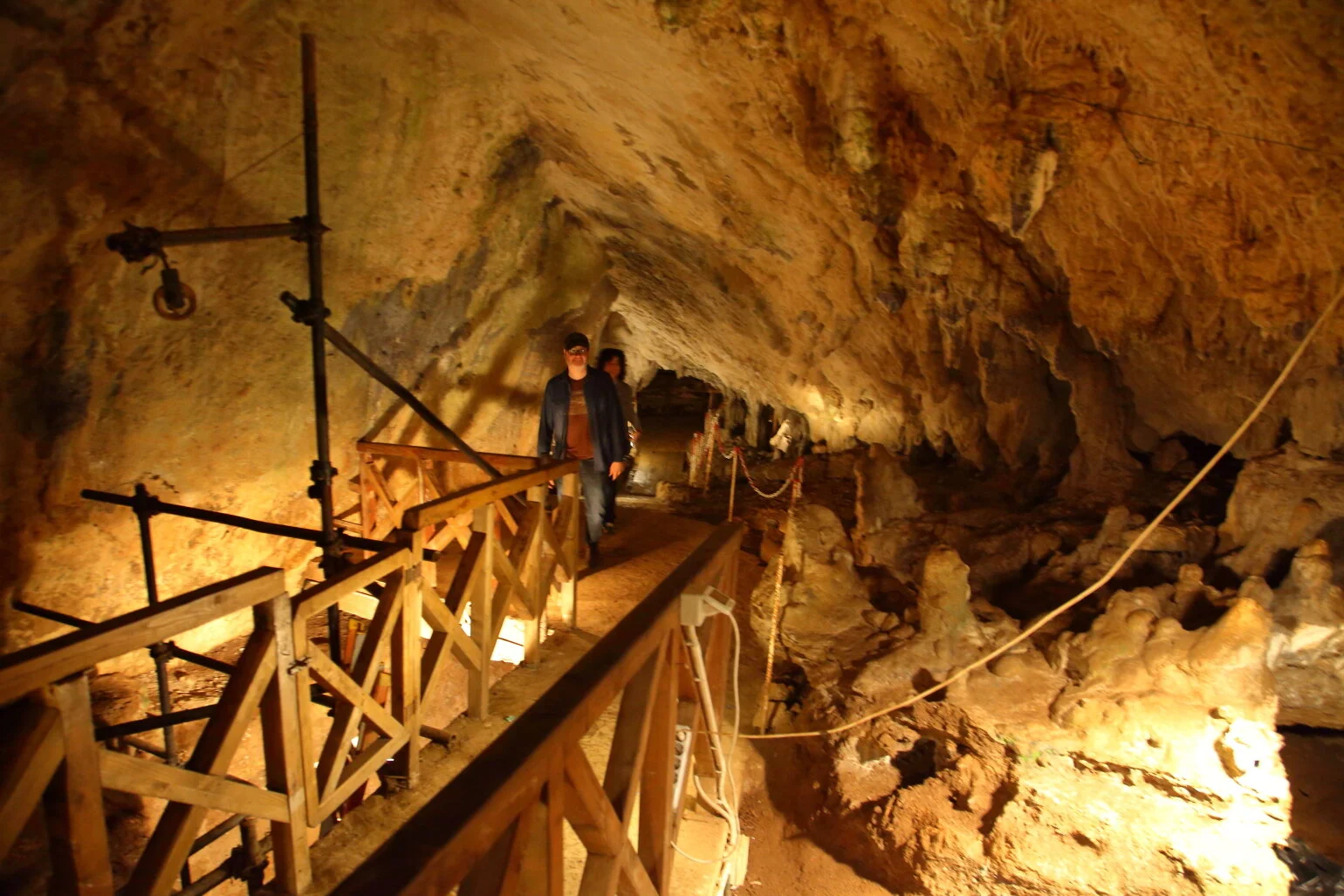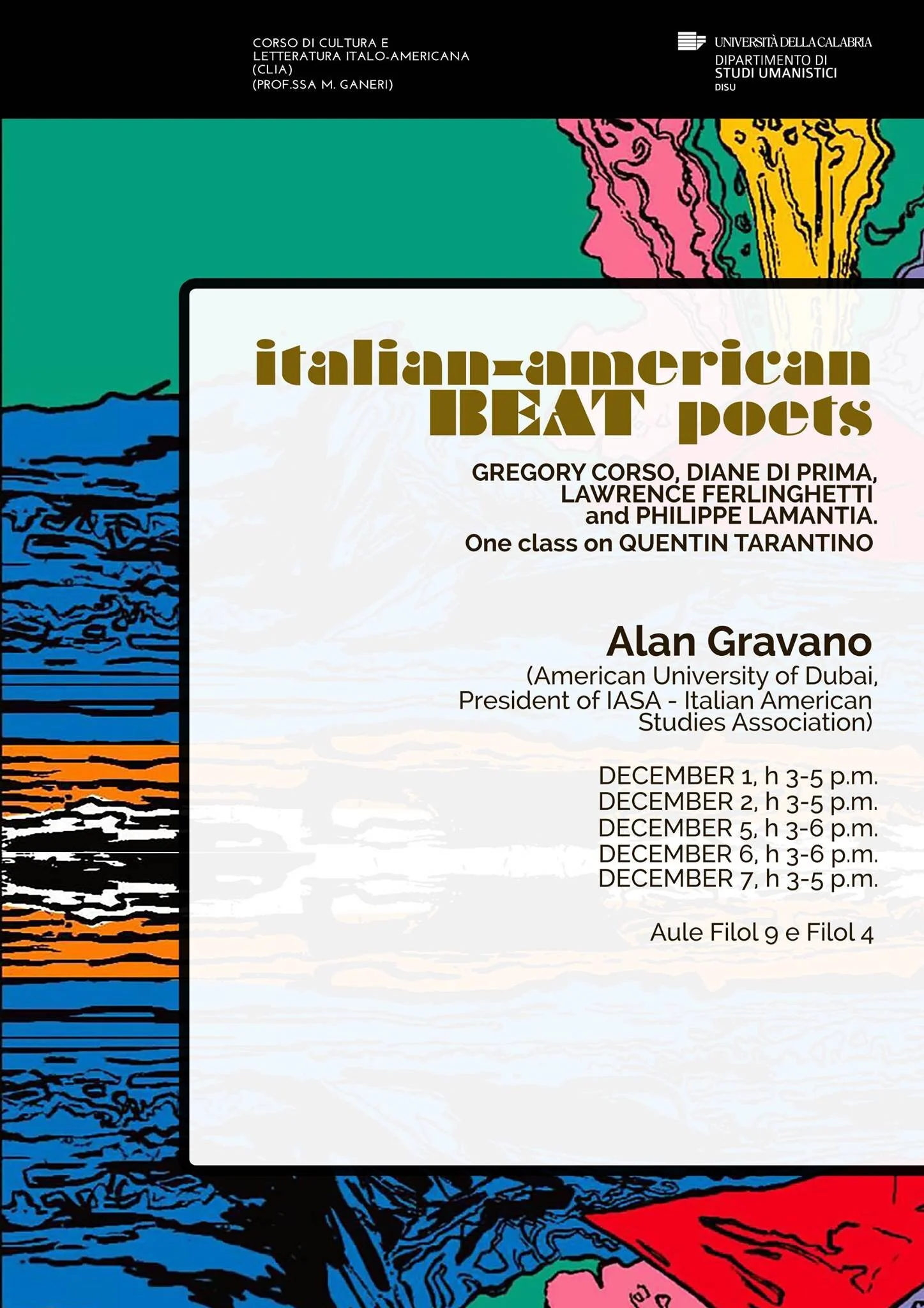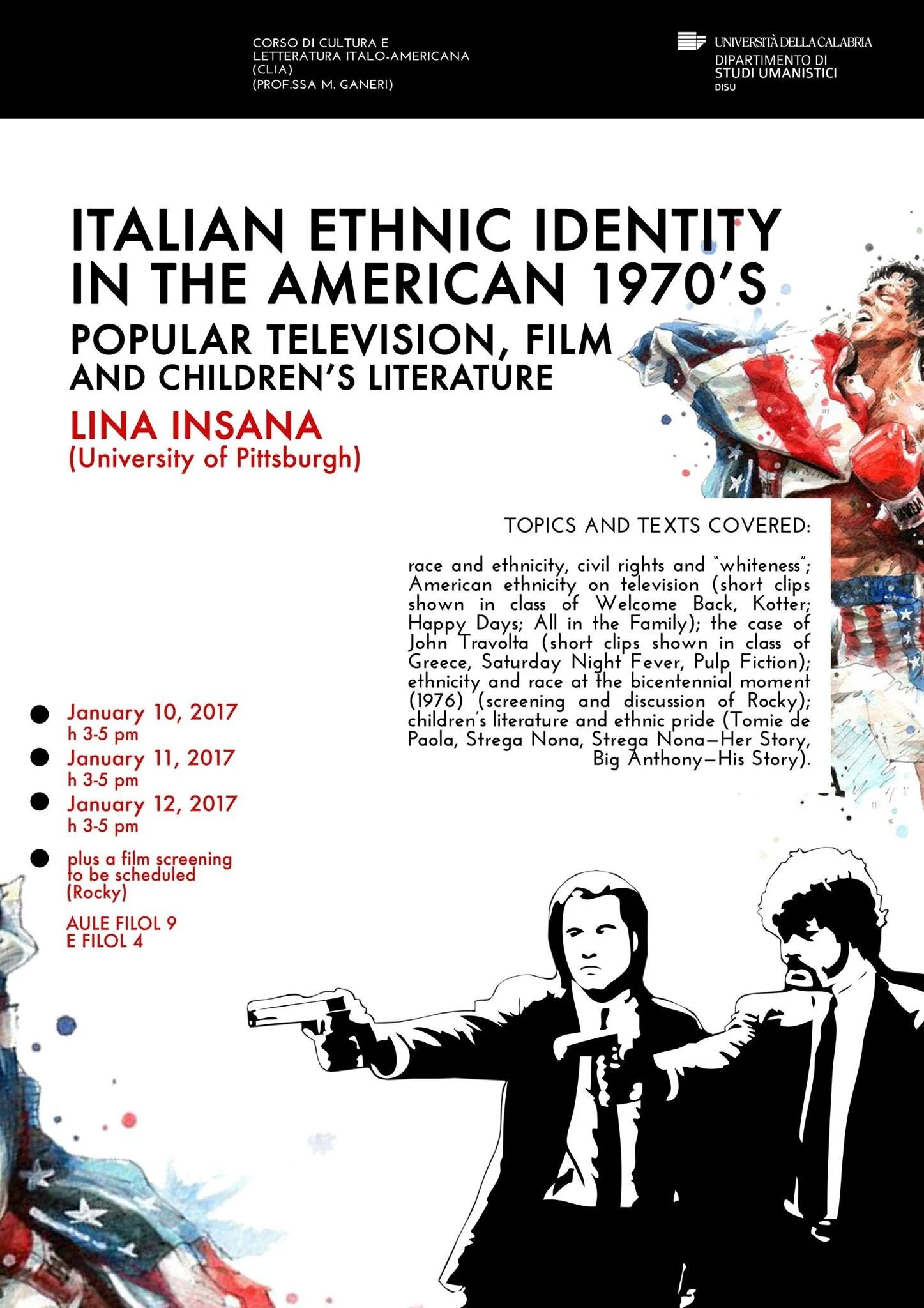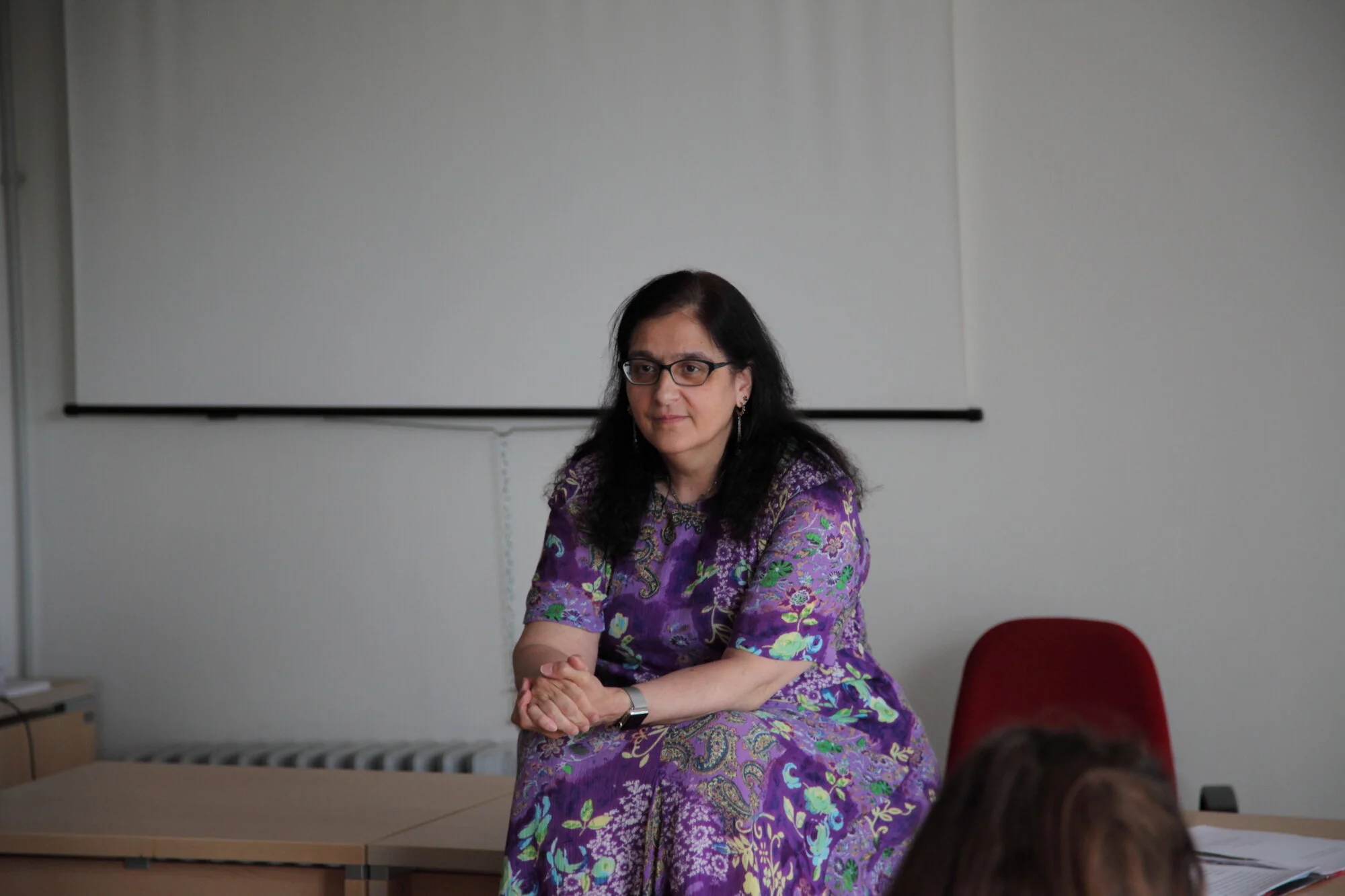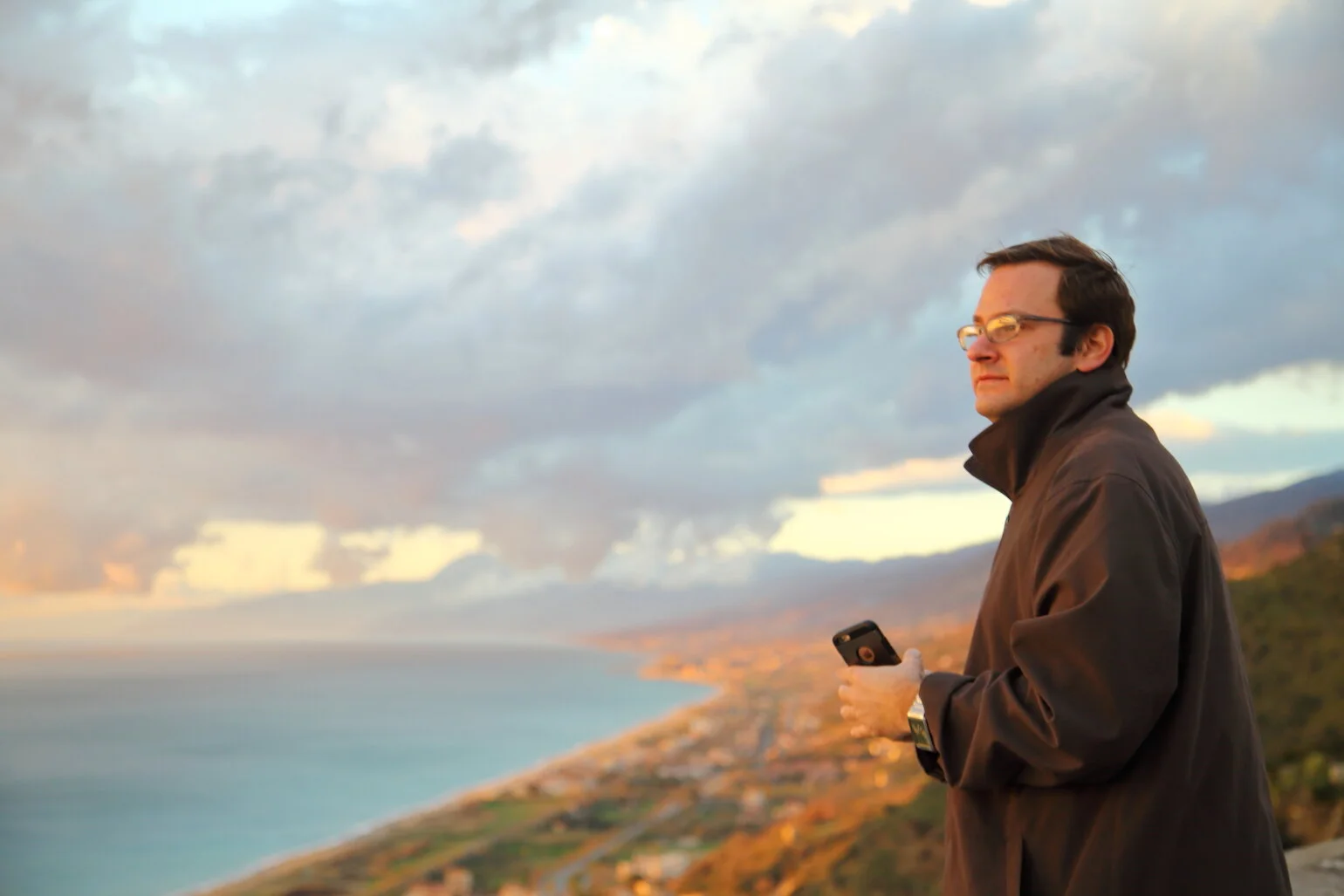Il corso intende mostrare la ricchezza delle espressioni autentiche della presenza etnica italiana negli Stati Uniti d’America, esplorando le varietà dell’esperienza italo-americana, dall’immigrazione all’etnicità e oltre. Le lezioni sul contesto storico-culturale, le analisi di testi letterari, storici e sociologici, le visioni commentate di film offriranno un’ampia serie di risorse per lo studio. Il corso offrirà agli studenti il necessario background storico e teorico per comprendere sia il rilievo dell’esperienza italiana negli Stati Uniti, sia il suo contributo alla storia culturale e letteraria contemporanea tanto nord americana quanto italiana.
This course draws on a wealth of authentic expressions of the Italian ethnic experience in the United States to explore varieties of the Italian American experience from immigration to ethnicity and beyond. Background lectures, discussions of readings in literature, history, and sociology and films will be utilized to bring a full range of resources to this study. The course will provide students with historical and theoretical backgrounds to become aware of the experience of Italians in the US and their contributions to both the American and the Italian contemporary culture and literature.
Rebecca West
Sam Patti
Michele Fazio
The course will address the following topics:
1. “Working-Class Studies: Reading Class and Ethnicity in Italian American Literature"
I will provide an overview of the interdisciplinary field of working-class studies and discuss the ways in which it enriches the study of Italian American literature.
2. "Working on a Dream: Working-Class Masculinity in Italian American Literature”
Class lectures will focus on the works of Pietro di Donato, Mario Puzo, Tina DeRosa, and Don DeLillo.
3. “Contemporary U.S. Multi-Ethnic Literature and Italian American Women Writers”
Class lectures will focus on the works of Carole Maso, Louisa Ermelino, and Paola Corso.
4. “The Commemoration of Sacco and Vanzetti in the U.S. and Italy: A Comparative Study”.
I will present my ongoing archival research on the cultural legacy of the Sacco and Vanzetti case.
5. “From Folk to Rap: Italian American Working-Class Heroes in Song”
Lectures will introduce a selection of labor songs from the 1940s to the present, focusing on the music of Woody Guthrie, Bruce Springsteen, Kento, and others.
Lina Insana
Topics and texts covered: race and ethnicity; civil rights and “whiteness”; American ethnicity on television (short clips shown in class of Welcome Back, Kotter; Happy Days; All in the Family); the case of John Travolta (short clips shown in class of Greece, Saturday Night Fever, Pulp Fiction); ethnicity and race at the bicentennial moment (1976) (screening and discussion of Rocky); children’s literature and ethnic pride (Tomie de Paola, Strega Nona, Strega Nona—Her Story, Big Anthony—His Story).
There is a need for ethnic identity development as part of overall psychological development; when this does not occur then there is a gap in the development of self-identity. It is also critical that the ethnic identity assumed is an authentic one. The situation of the Italian diaspora will be used as the case study of why ethnic identity is critical for psychological well-being for hyphenated immigrants in general. The situation of Italian Americans, in particular will be explored.
Ryan Calabretta-Sajder
Week One: Italian American Writing Amidst the AIDS Epidemic
Lecture One: Sexual Revolution, History of Gays in American; Intro to Queer Theory; Intro to The Violet Quill
Readings: Excerpt from The Family of Max Desir (11 pages); Except from The Second Son (20 pages)
Lecture Two: Intro to Robert Ferro; Discussion of The Family of Max Desir; Discussion of The Second Son
Readings: Short except from The Second Son and/or “Gay Literature Today”; Except from Picano (TBA possibly “The Symmetry”)
Lecture Three: Presentation on Archival Material from the Ferro Estate; Discussion of “Gay Literature Today” (Ferro); Intro to Felice Picano
Readings: “Call Me Latin” 9 pages & “Memoirs of a South Philly Sissy” 16 pages (Tommi Avicolli Mecca); “Vinegar and Sugar” 6 pages (Tom di Maria); “the art of noise” 7 pages (Chris Lombardi)
Week Two: Patching Together Gay Italian Americana: Fiction, Essay, Memoir, & Poetry
Lecture One: The Early IA Queers; Discussion of short stories & essays
Readings: “Fuori in Italia: A Gay Grandson Encounters La Madrepatria” 13 pages (George De Stefano); “Sunday Dinners” 11 pages (Frank Spinelli); “When One (Dead) Gay Italian American Son Helps Another” 19 pages (Michael Schiavi)
Lecture Two: Discussion of short stories & essays
Readings: Poetry of Peter Covino
Lecture Three: Poetry of Peter Covino; Possible Skype Encounter with Poet; Continued Discussion of SS and Essays
Readings: Mambo Italiano (Steve Galluccio) Act One, 88 pages
Week Three: Gay Italian Americana Meets the 21st Century
Lecture One: Discussion of the play, Mambo Italiano; Intro to Adaption Theory; Begin watching the film adaptation
Reading: Mambo Italiano Act Two, 40 pages
Lecture Two: Discussion of the play, Mambo Italiano; Finish watching the film adaptation; Discussion of adaptation
Reading: “Gorgeous Identities: Gay and Lesbian Italian/American Writers (Mary Jo Bona) 12 pages; One more critical piece
Lecture Three: Dramatic Interpretations of play; Possible discussion with Galluccio; Discussion of critical articles; Course conclusion
Required Reading:
Galluccio, Steve. Mambo Italiano. British Columbia, CA: Talonbooks, 2004.
Recommended Readings:
Bergman, David, ed. The Violet Quill Reader. New York: InsightOutBooks, 1994.
Capone, Giovanna (Janet), Denise Nico Leto and Tommi Avicolli Mecca, eds. Hey Paesan! Writing by Lesbians & Gay Men of Italian Descent. Oakland, CA: Three Guineas Press, 1999.
LoGiudice, Josepth Anthony and Michael Carosone, eds. Our Nakes Lives: Essays from Gay Italian-American Men. New York: Bordighera Press, 2013.
Tamburri, Anthony Julian, ed. Fuori: Essays by Italian/American Lesbians and Gays. West Lafayette, IN: Bordighera Press, 1996.
